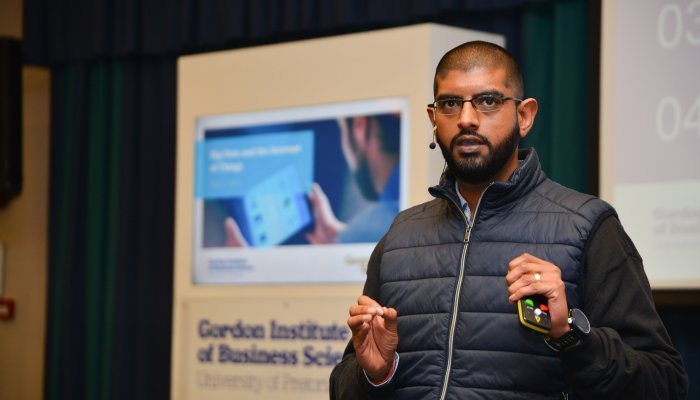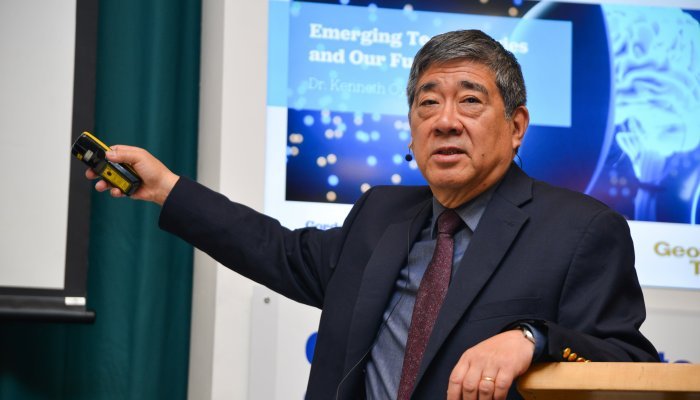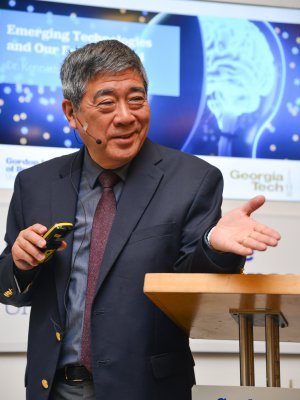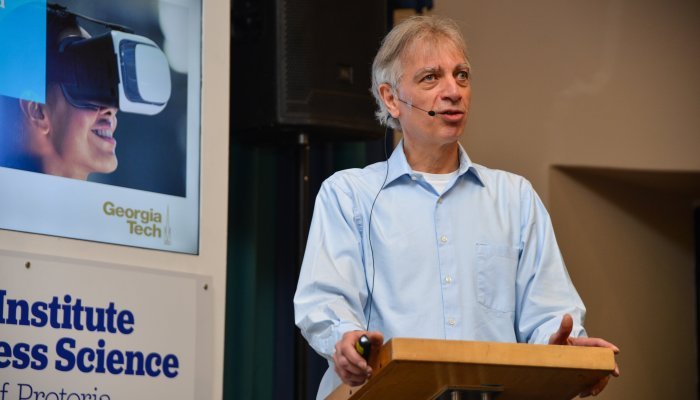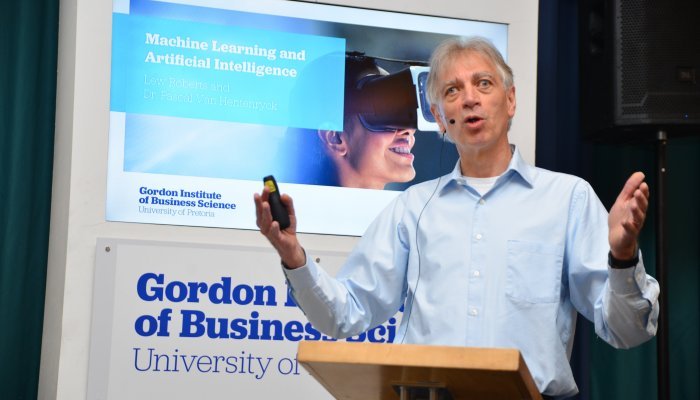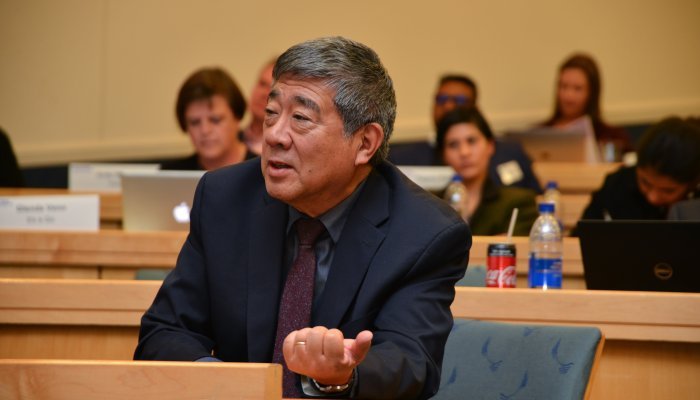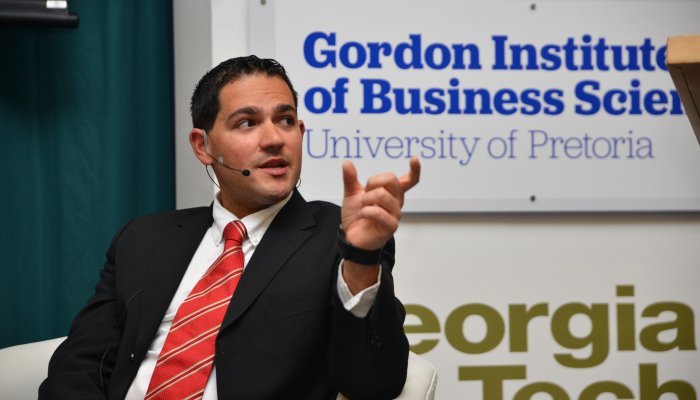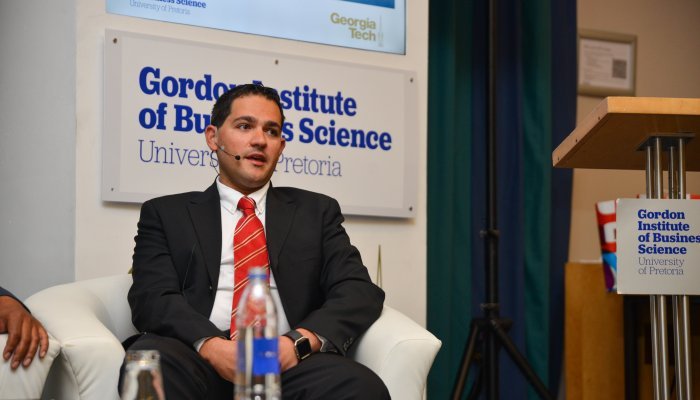A raft of eye-opening futurist technologies were highlighted during the Emerging to Converging Technology: The Future World conference at GIBS. Even the most mind-boggling technology up for discussion, neurocomputation firm Koniku’s focus on harnessing living cells as vehicles for computation, requires and harvests data. As Dr. F. Kennedy McDaniel, chief of staff at Koniku, noted during her presentation: “This is what we can do with this technology. By being able to digitise smells, you can now create a quantitative system with which to compare them.” In other words you can map the data and, in the process, unlock innovative uses based on biology.
While human beings marvel at a world of reverse-engineering biology, self-driving cars and telemedicine, we tend to focus less on the building blocks behind these technologies: data. In part, this is due to a lack of understanding for the value of concepts like big data and data analytics but, make no mistake, the data harvested through these channels is a bridge and an enabler, said GIBS lecturer and data analyst specialist, Manoj Chiba.
He warned, however, not to elevate data to something more than an enabler and to be pragmatic about the changes it brings as it opens up our private lives to scrutiny and puts a mirror to the human condition. The quantity of the data itself is, said Chiba, of less significance than the ability to search, aggregate and cross-reference data sets, in order to come up with a true understanding. “This is because I am not a number,” said Chiba. “So for AI and all these things to work nicely, you can’t take a single data source. People are multi-dimensional, so big data is about different types of data.”
Tapping into these digital insights enables companies to engage in the real world, understand human decision-making, trends and buying habits, and create more efficient and effective systems and supply chains. But getting this right demands that data analysis is well embedded across an organisation, and not housed in a single business unit, said Chiba. “We need to rethink the concept of an organisation,” he said. “It’s about co-ordination across all activities.”
Chiba’s message was clear: “Without big data analytics, companies are blind and deaf.” And yet the challenge for organisations in a future-focused world, for academics and for scientists too, is how to effectively use and make sense of the wealth of data being gathered. “That’s the big issue we face,” said Chiba. “The Internet of things (IoT) is just another data source. It gives us some intelligence, but what are we doing with the data?”
The heartbeat of healthcare
A critical sector focused on incorporating the potential for AI and data analysis around the world is healthcare. Dr. Elton Dorkin, director of Dr. E.P. Dorkin & Associates, began his address by referencing an Accenture analysis which projects that US$150 billion in savings could be achieved by 2026 in the United States alone as a result. The problem, he said, is that while these technologies work in New York and Sandton, in areas that lack basic sanitation and potable water – let alone innovations like cloud technology, electronic medical records and health informatics – there is little or no data on which to build.
As specialist urologist and GIBS alumnus, Dr. Evangelos Apostoleris observed: “Sometimes something like running water could be the most important health intervention in a community, or building a road so an ambulance can get through. Sometimes importing a technology which needs 5G isn’t the option.”
Sure, expert systems can be used to highlight the likelihood of diagnosing conditions like birth asphyxia, based on a risk score, but the challenge in Africa is still the expert skill needed to act on this, said Dorkin.
Another consideration at play is the quality of data sets. “A lot of medical information doesn’t sit on the system. Some people pay for doctor visits independently, but if we don’t have information then that’s a problem,” said Dorkin. However, stressed Apostoleris, the world is moving towards wearables, telemedicine and data in healthcare and, in this new reality, it is important that clinicians are able to reflect not only on their own data but on reliable external data too. “Healthcare organisations need to be ‘data organisations’,” said Apostoleris, noting that South Africa was, regrettably, undercapitalising on technologies like telemedicine.
In Australia, he observed, every citizen has a ‘my health digital record’, which they are entitled to and which they can delete if they wish. “This is health information accessible whenever and wherever which is high quality and which is secure,” explained Apostoleris. This approach, he said, holds benefits and cost-savings across the healthcare value chain simply by sharing information easily and quickly. It also puts the patient where they belong, “at the centre of healthcare”.
Human-focused tech
The notion of a human-centric approach to technology may be at odds with science fiction fantasy, but as keynote speaker, Dr. Kenneth Oye from MIT, highlighted in his opening presentation, solving for human – and often business – challenges continues to push technology forward.
In an illuminating presentation, Oye highlighted innovations such as producing opiates using yeast instead of poppies to create analgesics which are less addictive. Or Bluebird Bio’s gene therapy treatment for people with the blood disorder beta-thalassemia, which has just received European Union conditional market approval (the firm is now turning its focus towards a cure for the inherited blood disorder, sickle cell).
Oye spoke of the successful association between MIT’s Professor Manolis Kellis and Harvard University researchers to identify the gene most commonly linked to the development of obesity, known as the FTO protein. “The potential for this kind of ‘cure’ is enormous,” he said. “The first applications will be to help cancer patients put on or retain weight.”
Georgia Tech’s A. Russell Chandler III chair and professor, Dr. Pascal Van Hentenryck, added to this cornucopia of possibilities in his presentation on machine learning, addressing advances like convolutional neural nets, which “have revolutionised the field of computer vision”. Long short-term memory (LSTM), an artificial network used in deep learning, was also highlighted as a ground-breaking new development and one of the most significant advances in AI in recent years. As Bloomberg Business Week wrote in 2018: “These powers make LSTM arguably the most commercial AI achievement, used for everything from predicting diseases to composing music.”
Similarly, when it comes to the world of robotics, Queensland University of Technology’s acclaimed roboticist, Dr. Peter Corke, delved into the interplay between the virtual and real worlds and how modern robots are being taught to learn complex skills in a simulation environment before moving into the real world.
These machines are all around us. Take drones, for example, which could be used to fly material up to a construction site without the use of a crane, rather than just delivering packages or beer. Or underwater robots like the EcoMapper, which can build 3D models over an underwater terrain and help to measure water quality.
Exoskeletons are another example, allowing humans to wear robots to increase strength and accuracy. The wearer is in charge and does the smart things “while the robot is doing the brawny things”, explained Corke. Then there are service robots which are already entering our homes and offices, such as robot vacuum cleaners and telepresence robots, which allow you to attend a meeting halfway around the world or visit a location ‘virtually’.
Field robots are already in use in undersea operations and for bomb disposals and mining, said Corke, while the likes of Amazon runs on the back of 200 000 robots.
Pushback
It is ironic that with each new leap forward in technological advancement – spurred on by the very data we feed the system – that human beings are increasingly becoming more unsettled and uncomfortable with the implications of this new world.
Just recently, analysis firm Oxford Economics predicted that up to 20 million manufacturing jobs around the world would be replaced by robots by 2030. Forecasts like this are making labour intensive, blue-collar economies nervous.
But, citing the World Economic Forum, GIBS’ Chiba stressed that while 75 million jobs around the world could be displaced by 2022 due to robots, some 133 million new jobs will be created. “Because of AI and tech there is going to be a net gain of jobs available,” he said. “Things we can’t imagine will need to be done. Yes, it’s going to be difficult to understand what is going to happen in the next five years, and what these jobs are, but nothing will replace critical thinking and innovative creative thinking. The road to that [net gain of jobs] is going to be bumpy, but panicking is not going to solve the problem. We need to reskill ourselves.”
In other words: Humans, too, need some fresh data input.
DIGGING FOR DATA IN AFRICA
During the course of The Future World conference, a clear divide became evident between a sophisticated, technology-driven world and emerging markets lagging in terms of access and often hampered by cost. As GIBS’ Manoj Chiba noted: “We keep forgetting about a large portion of the African population that lives below the poverty line.”
Without plugging these individuals into the data-gathering machine, there will inevitably be bias in programming and a skew in terms of applications. However, this disconnect is also being jumped on as an opportunity by the likes of CrowdForce. This Nigerian platform is not only active in the data-collection space but is rapidly creating an offline and online agent distribution network in Nigeria and Ghana which uses mobile technology to enable underserved communities to access financial services and digital payment platforms.
“We understand that data is the new oil and companies need data, even government policies can’t work properly as there is no data to support policies,” said CrowdForce project manager Tunde Elijah Kelani. “We built a network of 100 000 field agents across the country to get data. Because of our network, it is easier to get data at a faster rate, and you can send the results in real time and make faster decisions.”
Now CrowdForce is using this network of on-the-ground field agents to solve the challenge of a dearth of trust in financial services, coupled with a lack of access.
KEY TAKEAWAYS
· Data is the building block behind technologies like artificial intelligence, machine learning and robotics.
· Because human beings are multifaceted, for the likes of AI to work it is vital to source from different types of data.
· Around the world there is a driving need to increase data collection.
· Companies, governments and organisations are still battling to make use and sense of the wealth of data being gathered.
· Successful technologies are often those which harness the power of data to solve for human needs.





